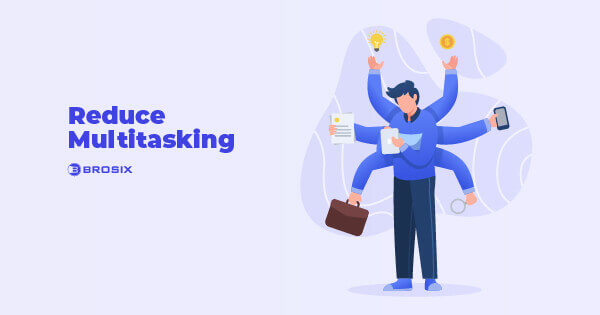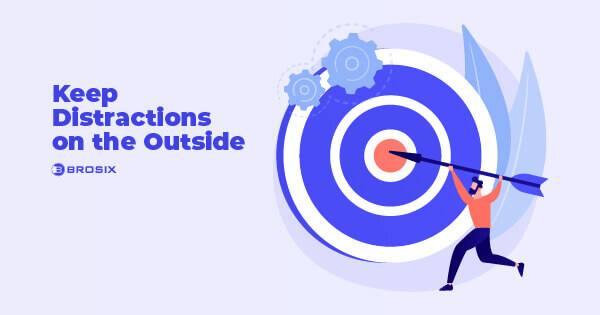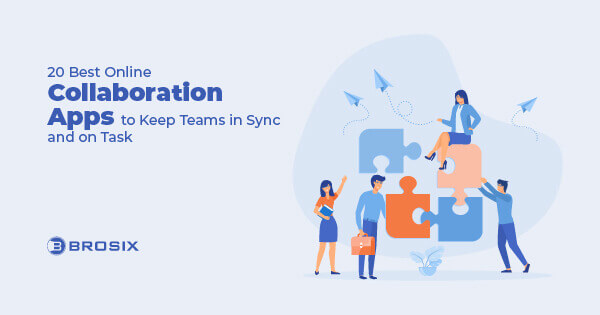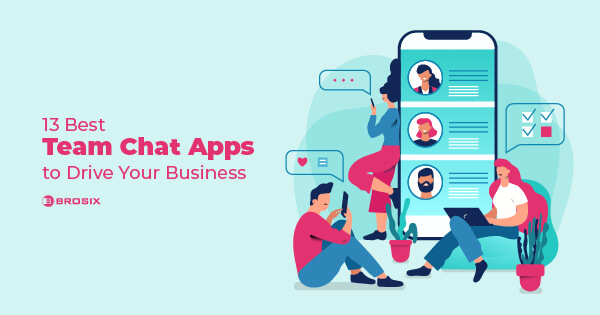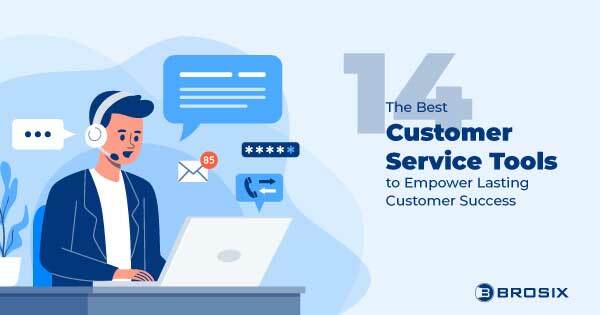Work efficiency refers to achieving the maximum amount of tasks within minimal time and effort. Organizations encourage higher work efficiency among employees because it leads to increased productivity. Work efficiency is a key driver to success for businesses.
While employers look for many qualities in an employee, it’s hard to look past someone who’s not only hard-working and productive, but also efficient in what they do.
But it begs the question – if your efficiency is lagging and you’re looking to boost it, what do you do?
Start by breaking down the root causes of your inefficiency and poor productivity in the workplace. Consider, for example, things like:
- Your personal organizational habits
- The communication channels you employ
- The toolkit at your disposal
- Too many distractions
- Burnout or too much time in the office
Once you do that, continue with the strategies to improve your productivity levels.
5 Simple Ways to Improve Work Efficiency
While it takes time to make serious progress, there are things you can do today to improve work efficiency and, as a result, show your company that you’re a valuable part of the team.
If you’re ready to finally improve your efficiency at work, check out the 5 simple steps below!
1. Implement a To-Do List
Regardless of your field, position, or place of employment, the fact remains that your day is full of tasks. Which ones will you complete first? Which ones are most important? How will you remain on schedule throughout the day?
If you don’t have a to-do list, you may find yourself prioritizing the wrong tasks or overlooking ones that require your immediate attention. As a result, your work efficiency slips, your productivity falls off the map, and you miss important deadlines.
Luckily, it’s easy to create a to-do list. You can do it the old-school way by putting pen to paper, mapping out your task list, and checking off items. Or you could integrate technology into the process by taking advantage of one of the many apps designed to keep you on track. They can help you divide a laborious project into chunks of smaller tasks.
And no doubt one of the top players is Todoist. In fact, it’s been selected as an editor’s choice from PCMag, writing:
“If you’re looking for the best to-do list app, one that works on all your devices, has great features for monitoring your productivity, and lets you geek out on organizing everything you have to do, Todoist is for you.”
2. Improve Communication
Workdays are full of potential time-drains – cluttered workspaces, unproductive meetings, and social media, just to name a few. Communication with coworkers, clients, and prospects, however, shouldn’t be one of them.
Effective communication is fundamental to workplace productivity. But improving communication won’t happen overnight. Nor will it happen on its own.
Either way, you need to implement a system for fixing what’s broken. That could mean a seminar or team-building centering around team communication. Or it could just mean implementing the right team communication software.
On that latter point, consider enterprise instant messaging. Business-oriented instant messengers feature a variety of channels, meaning right out of the box there’s a medium to suit any type of workplace communication.
Text chats and chat rooms are perfect for free-flowing or ongoing conversations, yes, no, or short answer questions, or organizing discussion spaces by project, team, department, or even location.
Voice and video chat, on the other hand, are ideal for instances when you need to replicate a more personal connection, but in-person communication is either impractical or impossible.
Email and in-person communication still have their place. For example, if it’s not urgent or you need to copy multiple recipients – send an email. If you’ve got big or transformative news to share, then consider an in-person meeting.
Depending on the nature of the communication, some channels just make more sense than others. But it’s up to you to have the technology at your disposal to make that determination.
3. Reduce Multitasking
Give single-tasking a try! Research shows that multitasking reduces productivity and efficiency. Switching back and forth between tasks and tabs leads to a lag time while your brain transitions between information, costing up to 40% of one’s productive time. So by focusing on one task at a time, you get more done.
But let’s face it: in today’s ever-dynamic workplace, you can’t completely avoid it. So it’s up to you to be more intelligent and resourceful about how you handle time management and multitasking.
To maximize your online workflow, limit the number of open tabs in your browser window. Each open tab is an avoidable distraction. What’s more, open tabs not only make it harder for you to find information, but also negatively impact your device’s RAM by consuming more working memory. In the end, both you and your device’s efficiency slip.
Consider how you work with your team, as well. All-in-one communication and collaboration platforms empower real-time communication while facilitating meaningful teamwork within one unified platform.
Coupling tools like a virtual whiteboard, instant screenshot, remote desktop and unlimited size file transfer with real-time communication leads to:
- Less switching back and forth between collaboration IM features, restrictive file-sharing platforms, and unsecure chat applications
- Deeper focus and concentration on tasks and collaboration
- A reduced likelihood of data falling into the wrong hands
- Increased efficiency and productivity
While you may not be able to avoid multitasking altogether, you can be smarter about how you approach it.
4. Maximize Downtime
Much in the same way multitasking is here to stay, so is your task load. But there’s only so much time in a day. And your brain has even less productive time and capacity. So you’ve got to pinpoint ways to work smarter.
- Work on the go – Commute times are growing. But instead of scrolling your news feed, use that time to manage the day’s to-do list, reply to instant messages and emails, or brainstorm. Today, mobile team communication apps not only keep you in touch with your team, but ensure collaboration transpires wherever you are.
- Work in intervals – Whether it’s 25-minute sprints or 90-minute intervals, aim your focus on a single task or job with no distractions or interruptions for a short period of time. Then take a designated break to recharge. Don’t cram a week’s worth of tasks into one day and then try to complete it all without breaks.
- Work on yourself – When you have downtime at work, spend it on your health and well-being. Take a break from screens and devices and consider reading a book or doing some brain activities, physical exercises, or yoga, for example.
5. Keep Distractions on the Outside
Smartphones, social media, cluttered workspaces, and over-connectedness can wreck your efficiency faster than the next notification, especially in a remote work environment. But while distractions are practically unavoidable these days, there are steps you can take to reduce them.
- Mitigate interruptions. As the majority of U.S. workers can’t resist social media, place your smartphone out of sight. Turn off notifications. Consider deleting social media apps during the workweek. Remove browser links to and sign out of social media accounts.
- Pay attention to your work environment. Organize your workspace. Have all your essentials handy. Use your to-do list to structure your day. And if you’re working from home, consider carefully everything from your decor to your wardrobe and playlist.
- Disconnect from time to time. The increased connectivity and transparency of real-time communication has been a game-changer for workplace efficiency. But sometimes you just need to get work done. When that’s the case, sign out of email and messaging apps, disconnect your devices, and do what’s necessary to get to done.
- Don’t be a distraction. Most conversations can wait. Pay attention to your colleagues’ visual and virtual cues – headphones on, intense focus, or user status, for example. Just because you can meet in person or chat doesn’t mean you should.
5 Questions to Ask Yourself on the Way to Better Work Productivity
Now that you have some tangible methods to boost work efficiency, it’s time to take a step in the right direction.
Like most things though, improving efficiency and productivity is a process, and one that takes some self-examination, a strategy, commitment, and time.
Consider these five questions:
- Have you pinpointed why you’re lacking a high level of efficiency?
- Do you have a system in place not just for implementing the five steps above, but for sticking with them for the long haul?
- How will you ensure that technology boosts your workplace efficiency, instead of adding more distraction?
- Would enlisting the help of a coworker or supervisor better help you reach your goals?
- What measures will you implement to monitor progress?
While not always easy to answer, these questions are crucial to providing an idea of where you stand at the moment, getting off on the right foot, and importantly, staying on track.
The Wrap-up
Everyone wants to improve their work efficiency, but turning that into reality is often easier said than done.
But trying and failing in the past isn’t a reason to give up now! By putting into action the five steps above, and then carefully considering a few questions to guide you along the way, you’ll find it easier than ever to reach a higher level of productivity and efficiency in your work.
And if you are an employer, keep in mind that employees work better in a supportive environment.



